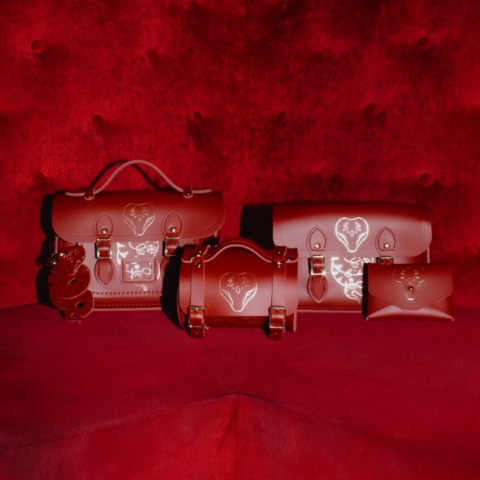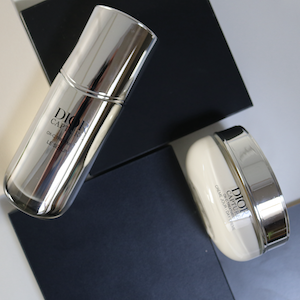Come Undone
By Jo Phillips
“Like life the clothes I wear tend to be a tad frayed around the edges’ . Jonathan Faiers writes about dysfunctional fashion from Tudor trend for slashed fabrics to hard times ripped denims featuring Comme des Garcons, Vivienne Westwood and Martin Margiela.”
– Iain R. Webb.
Cinematic clothing gets treated very badly. Acts of slashing, ripping, slitting and tearing litter the screen with a feast of bloodied flesh glimpsed through torn fashion and wardrobes full of tattered silks and ragged tweeds. Throughout the history of film the seductive sounds of textile destruction herald acts of fury, revenge and amorous possibility, while as Roland Barthes suggested where the garment gapes, is where clothing is most erotic; the intermittence of skin flashing between two edges irresistibly seductive. The scene where Audrey Hepburn rips open the back of Cary Grant’s shirt in Charade capitalises on the already powerful human desire to destroy, by offering us a better view of his lacerated back while Audrey, softly smiling, relishes in her moment of sartorial destruction. Grant’s recently deconstructed shirting brings to mind an almost identical version of lacerated linen, modelled some ten years earlier by Tom Ewell in The Seven Year Itch a fantastic fashion show of his own imagining, possibly the result of his having the shirt literally torn from his back by his over amorous secretary, but as it turns out is in fact the product of careless dry cleaning.
The erotic charge of the cinematic rip is matched elsewhere by its ability to express unbridled or calculated revenge. Clint Eastwood learns just how much he needs to regret spending the night with his crazed admirer in Play Misty for Me when, on returning home, he finds his entire wardrobe reduced to shreds, the result of his rejected one night stand’s handiwork with scissors and knife. Doubly shocking is the revelation of Olivia de Havilland’s sliced chiffon and sequins in ‘Hush… Hush, Sweet Charlotte’ for even though she voices our shock as she declares: ‘My dress…someone’s slashed my dress!’ we learn later that it is she herself who has carried out this act of fashionable mutilation in an attempt to put the blame on her poor deranged cousin Bette Davis, a case of the slasher slashed perhaps?
If cinema has a tendency to emphasise the erotic and criminal aspects of torn clothing, when fashion turns to slashes and tears these ‘faults’ are often accompanied by a heightened sense of transgression, breaking sartorial rules of good grooming and perfection. The mere suggestion of damage, the simulation, in fact of imperfection is enough to make a garment such as Schiaparelli’s celebrated ‘tear’ dress, from her 1938 Circus collection, a defining moment in fashion’s inexorable march towards what we might today understand as deconstruction.
Salvador Dali’s representation of tears defiling the otherwise perfect surface of her immaculate silk crêpe gown taught the style conscious that flaws can be fabulous; her wilful incisions into the perfectly regulated world of couture resulted in shock-factor chic that retains its power today, even when concepts such as the distressed and decayed have long become essential terms in the lexicon of style. Schiaparelli was, however, only revisiting and as it turned out predicting, what can be understood as fashion’s abiding infatuation with sophisticated sabotage and the wilful destruction of its orderly surfaces.
Elsa’s interrogation of the seamless perfection of fashion of course bore the most abundant fruit in the scissor-happy hands of the Belgian deconstructionists whose wilful exposure of the raw edges of style literally turned our conception of fashion inside out, a moment which nearly 25 years later repeatedly enchants us with the beauty of degradation, the exposed seam and frayed hem. It is worth noting that this season’s looks included Hussein Chalayan paying direct homage to this fabled moment of vestimentary vandalism ending his AW 2014 collection with a series of takes on the Schiaparelli/Dali slashing, transforming their printed tears into the real deal, his lacerated organza exposing the structural threads of fashion.
For the fashion conscious man about town in the 1530s the only doublet to be seen in was a slashed one, so slashed in fact that it took precision sewing to stop it falling to pieces. Whether this trend was a fashionable indication of the wearer’s familiarity with the sharp end of a rapier and his prowess as a swordsman, or whether it was an example of conspicuous consumption, advertising to all that here was someone who could afford to have his costly outfits intentionally destroyed, or perhaps simply as a way of showing off the quality of linen worn underneath, a sort of everyday striptease, it remains a craze that still divides fashion theorists and historians alike. Whatever may have been the reason for this early example of deconstructed fashion, its legacy has borne fruit in more recent fashion history, with Vivienne Westwood its most ardent admirer, think of her Cut, Slash and Pull collection of 1991, or any amount of stonewashed, ripped to ribbons denim covering (almost) the backs and thighs of late 20th century versions of these Renaissance fashion victims.
Whether, Renaissance, Belgian, Schiaparelli’s or Westwood’s tears and holes are the perfectly fashionable expression of the desire to undermine rational order, to revel in the unexpected and the inappropriate and this political impulse gives fashion’s continued affinity with the deconstructed its relevance. These ragged and ripped clothes remind us that however seamless the creation, production, marketing and consumption of fashion becomes, it always hovers on a state of collapse and disintegration, after all fashion’s ever changing looks are only possible if the previous season’s are destroyed.
Rei Kawakubo celebrated this state of perpetual and imminent disaster with her notorious ‘lace’ sweater of 1982. Knitwear with its potential for disintegration (what is knitwear but an act of faith where a series of holes are organised by a length of yarn that is always on the brink of unravelling?) became the perfect example of Kawakubo’s ‘difficult’ 1980s conceptual fashion. Instructing her knitters to loosen some of the screws on their machines so that ‘they can’t do exactly as they are supposed to’ Kawakubo created random and potentially catastrophic holes in the ‘finished’ sweater, prompting her to confess ‘I like it when something is not perfect’. That was 1982 of course, but it appears that the incomplete, the torn, the frayed, the patched is with us once again, not least from Kawakubo herself when she reprised her holey knits, albeit somewhat less dilapidated and formless, accompanied by similarly ‘perforated’ jackets for her fall 2014 menswear collection.
Even that most perfectly finished of labels; Chanel (Coco’s or Karl’s) has long understood the beauty of the dishevelled and that an exquisitely woven tweed suit never seems more alluring than when its hems end in tatters. Not content with a stylish soupçon of fraying Mr Lagerfeld, in the guise of a modern day renaissance ‘slasher’, for his AW 2014 collection sent his models out in holey suits and matching tights and pastel dresses reduced to tattered swatches of chiffon reminding us once again that the ripped and torn remains one of fashion’s greatest surprise tactics, a startling reminder of its desire to find fault with perfection.
Dr. Jonathan Faiers is Reader in Fashion Theory at Winchester School of Art. His most recent book Dressing Dangerously: Dysfunctional Fashion in Film is published by Yale University Press and he is the editor of the forthcoming journal Luxury: History, Culture, Consumption





